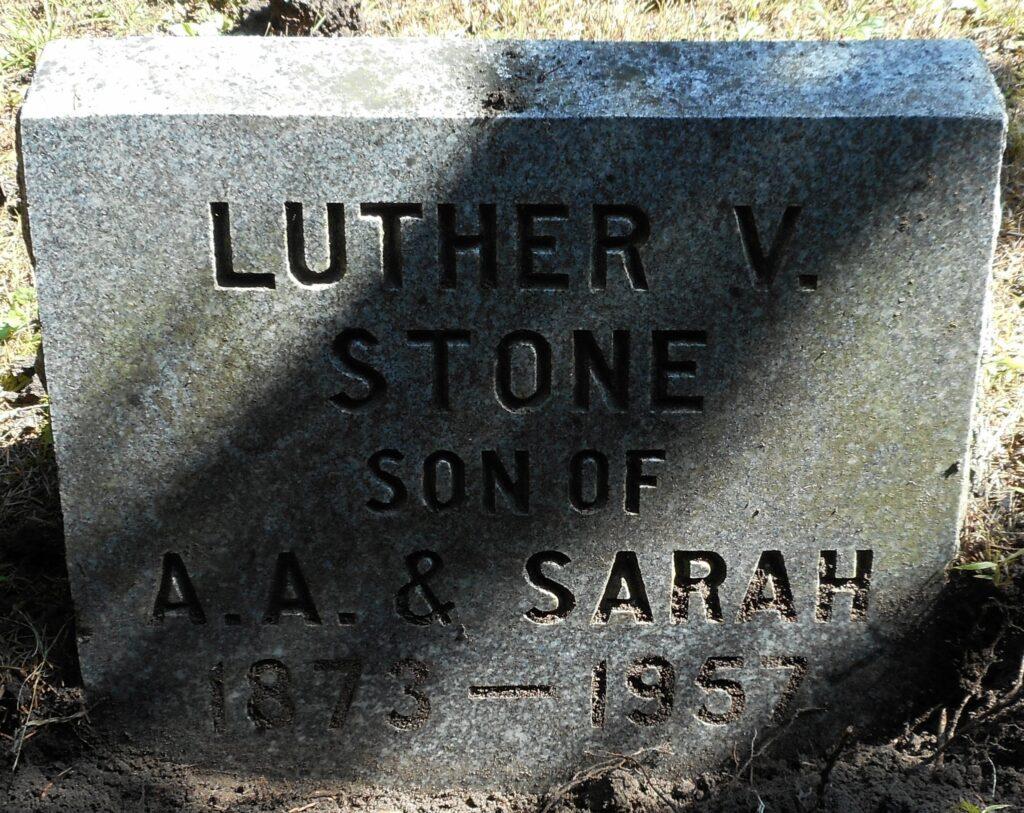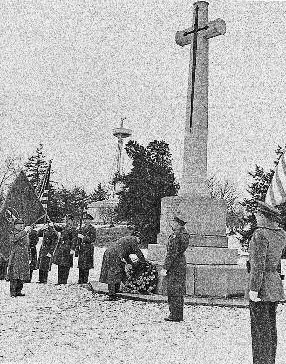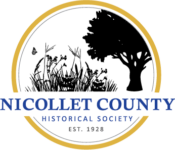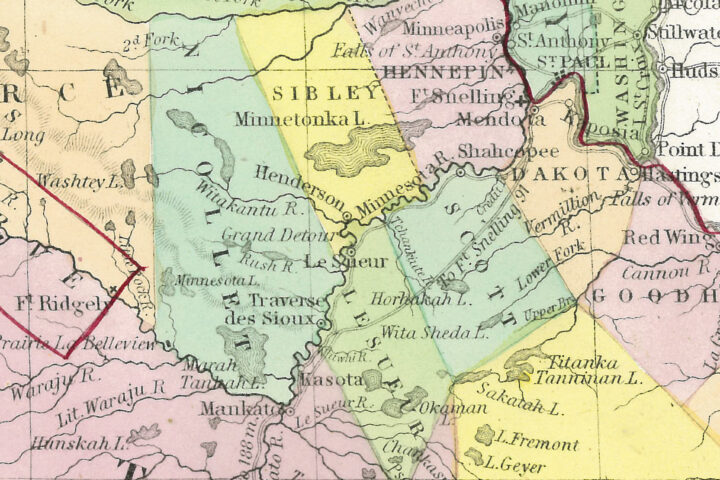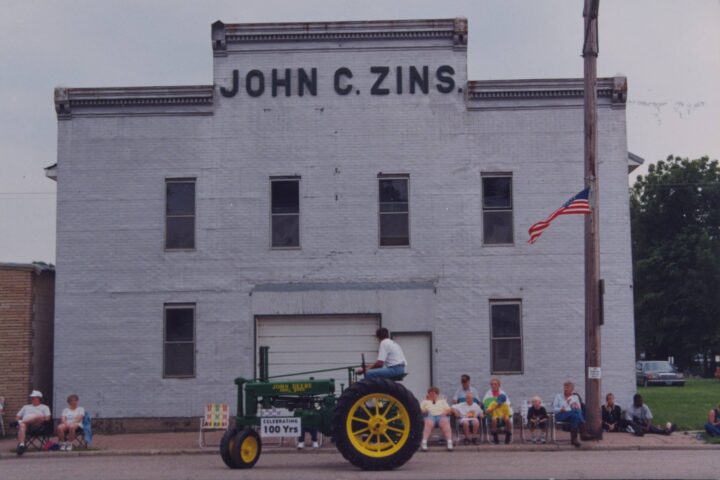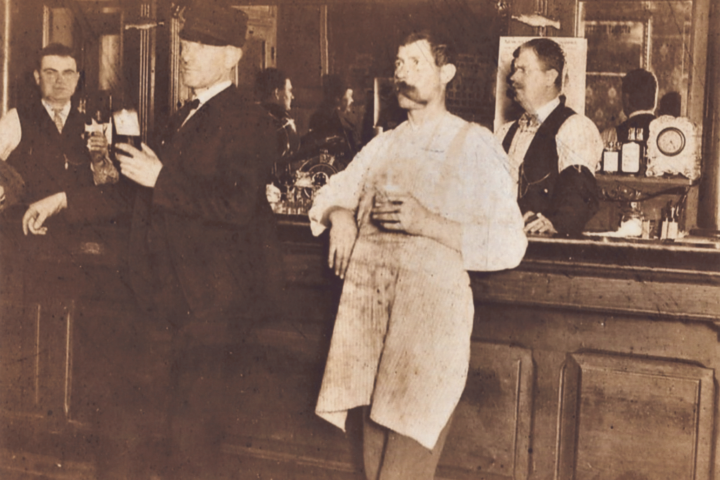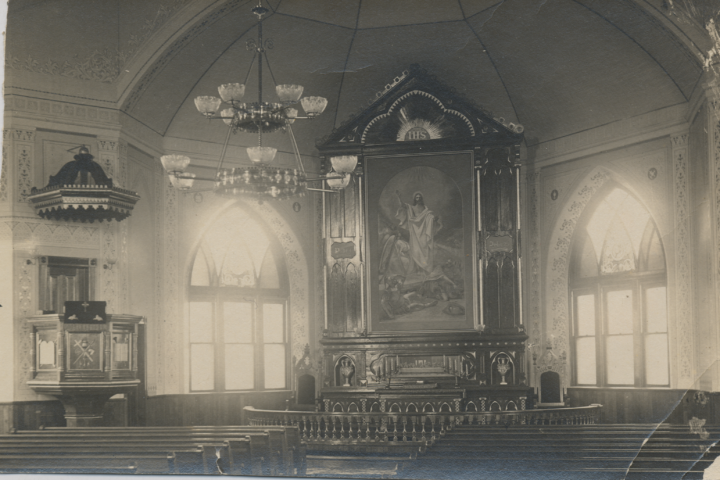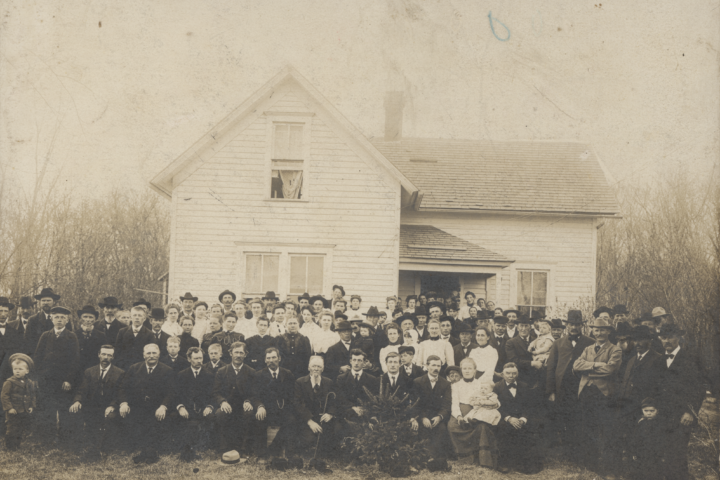by Marlin Peterson, NCHS volunteer
Previously printed in the May 2018 edition of The Crossing.
I have recently been assisting the back storage area, lending my knowledge of military items to identify and help organize that portion of the NCHS collection. With a special interest in the First World War, a number of items in the collection grabbed my attention, some of them being quite rare. One rare item I found directly related to a May 2017 Mankato Free Press article I had written for Memorial Day, on the U.S./Canadian soldiers of WWI. Found in the collection was an army cap belonging to a St. Peter resident who served in the Canadian army during WWI.
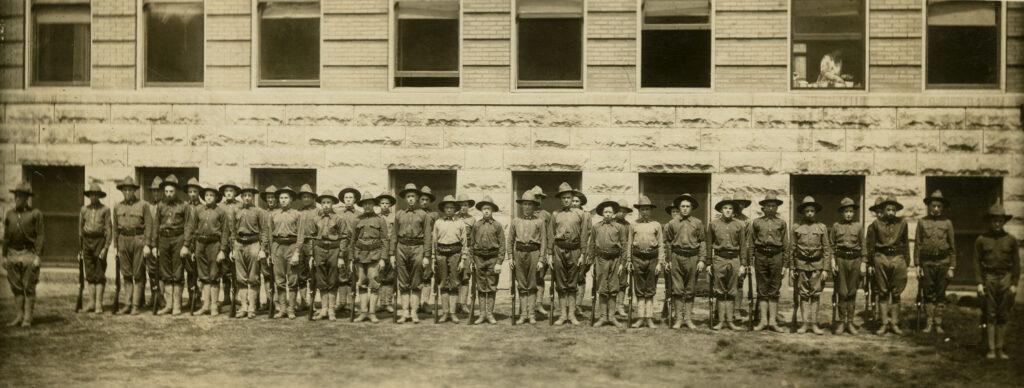
During WWI the soldiers of the British Empire came from England, Wales, Scotland, Ireland, Canada, South Africa, India, Australia and New Zealand. Of the 619,636 soldiers of the Canadian army, at least 35,612 were American citizens. These Americans served for a variety of reasons. Some had been born in Canada or had family connections there or relatives already serving. Many Americans were angered by the 1914 invasion of neutral Belgium by the German armies attacking France and felt that we should help defend France, our staunch ally during the American Revolution. Many were outraged by the pacifist views and lack of action of President Woodrow Wilson after the sinking of the passenger ship Lusitania in May 1915 in which 124 American lives were lost and then as in every war, there were those who joined up for glory and adventure.
Searching county histories for my newspaper article I found several dozen men from southern Minnesota who had served in the Canadian army during the war and searching a Canadian military website I found a recruiting form called an “Attestation Paper” on many of the men, three of whom had Nicollet County connections. Born in Kasota in 1893, Leslie Parson of St. Peter enlisted in February 1915 and spent over two years at the front, being gassed once and wounded several times. Maurice Wheeler of North Mankato served in the 48th Canadian Highland Infantry and survived the fighting but died of pneumonia several weeks after the armistice and is buried at Dieppe, France.
The third man and the connection of the artifact in the NCHS collection was Luther V. Stone, brother of prominent St. Peter attorney Marshall Stone. Marshall’s wife Josie was a pillar of the historical society in its early years and my mother had a lifelong close association with the Stones. While attending high school and teacher training she boarded at the Stone’s home at 416 So. Washington Ave., and had their trust to attend to their house once while they were on vacation visiting relatives in Canada. The house is still there today, and my mother likely would have been acquainted with Luther Stone as well.
Too old to join the American army, Luther enlisted in the Canadian army at Winnipeg Manitoba on March 25, 1918, just four days before his 45th birthday.
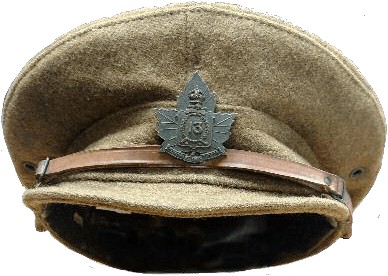
The hat in the NCHS collection has ‘STONE’ written inside of the sweatband and the maple leaf badge on the front indicated that Luther was a member of the 13th Battalion, Canadian Railway Troops. Research indicated that there were over 13,000 men in the railway troops battalions, their main job was repair, maintenance, and laying track and ties on damaged lines. They sometimes worked close enough to the front to receive artillery fire and some of the men were killed or wounded. Luther’s unit spent much of its time stationed near Albert, France, on the Somme Front, working on the Amien to Arras rail line. By the end of the war, they had moved into Belgium where they also worked on damage after the war was over.
For serving under arms of a foreign power these Americans by law could have been prosecuted and stripped of their citizenship, however, due to their large numbers no such action was ever taken. Around 2,700 Americans died in the Canadian service and on November 11, 1927, in remembrance of all of the Americans who had served, the U.S. and Canada dedicated the Canadian Cross of Sacrifice at Arlington National Cemetery.
Luther Stone evidently took great pride in his service which is indicated on the Stone family monument at Woodlawn Cemetery which reads: ‘L. V. STONE CANADA E. F. WORLD WAR I” (The E.F. indicates Canadian Expeditionary Force). Not being eligible for an American flag, last Memorial Day I fashioned a special maple leaf flag holder and placed a Canadian flag on Luther’s grave to honor him.
